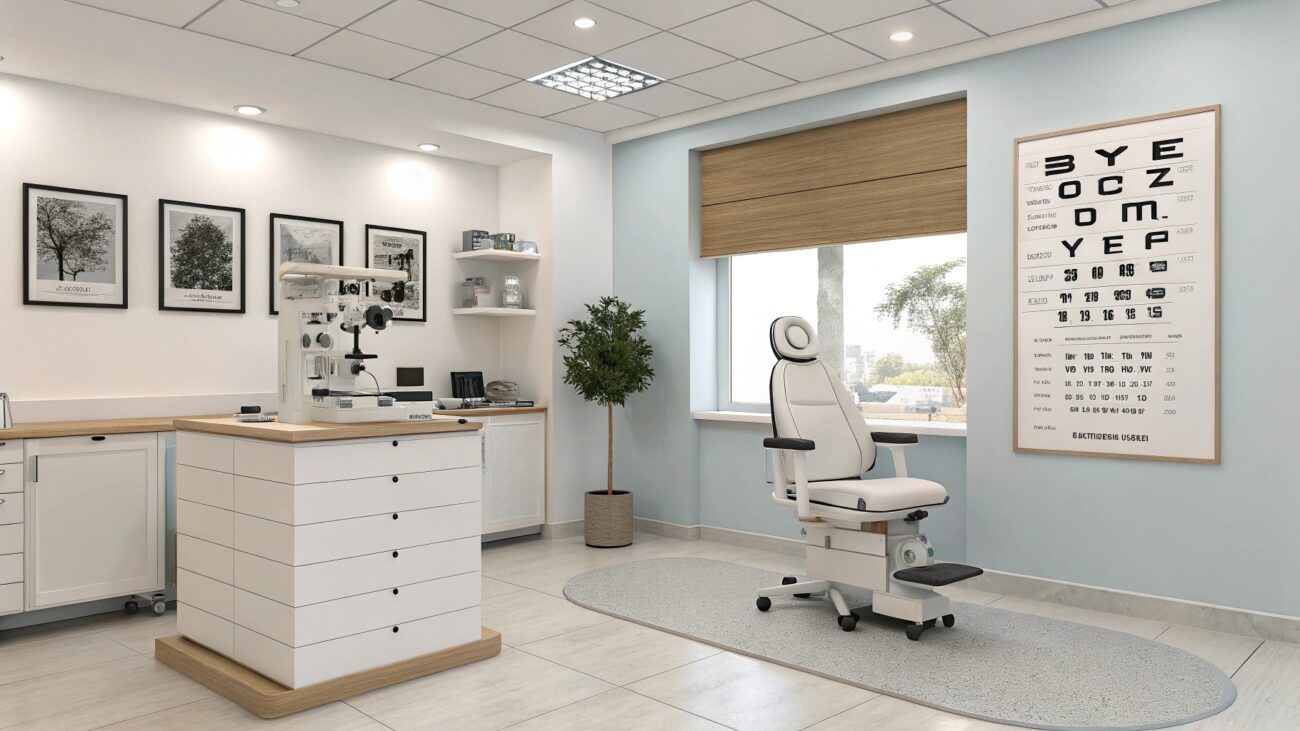If you’re searching for this answer, you probably want to know one thing: **how much cash you need to bring to your appointment.** That’s a great question! The good news is that having vision insurance dramatically lowers your out-of-pocket expense.
For a routine, preventative eye exam, most people with a dedicated vision plan (like VSP, EyeMed, or Davis Vision) will pay a simple co-pay. This fee typically ranges from **$10 to $40**. In some cases, your annual exam may even cost you $0.
However, the final cost isn’t always simple. You need to understand the difference between a routine eye exam and a medical eye exam. Knowing about common add-on fees is also key to avoiding a surprise bill.
The Essential Difference: Vision Insurance vs. Health Insurance
The single biggest factor in your final bill is which type of insurance the provider uses. You may have one, both, or neither, but they cover completely different things.
Routine Eye Exams Use Vision Insurance
Vision insurance (like a plan you buy through VSP or your employer) covers routine, preventative care. This includes checking your visual acuity, screening for common issues, and performing a **refractive test** to determine your prescription for glasses or contacts.
- **Coverage Focus:** Refractive services (your glasses/contact prescription).
- **Typical Cost to You:** A low, set co-pay ($10–$25 is very common) or $0.
- **Frequency:** Plans usually limit coverage to one exam every 12 months.
Medical Eye Exams Use Health Insurance
Your major health insurance (the plan covering hospital visits and prescriptions) is used when the visit’s purpose is medical. This covers the diagnosis, management, or treatment of an eye disease or condition.
- **Coverage Focus:** Eye injuries, infections (like pink eye), glaucoma, cataracts, diabetic eye exams, or dry eye treatment.
- **Typical Cost to You:** Your standard health insurance co-pay applies. Alternatively, you may need to meet your annual deductible first. This cost can be significantly higher than a vision plan co-pay.
Crucial Tip: If your doctor finds a medical condition during a routine exam (e.g., signs of glaucoma), they often transition the visit to a medical claim. In this scenario, your bill might involve your vision plan co-pay *and* charges related to your health plan deductible or co-insurance.
5 Factors That Increase Your Out-of-Pocket Eye Exam Cost
Even with great insurance, certain services are considered “extra.” You usually pay the resulting added fee entirely out-of-pocket. Always ask about these before the exam begins.
- Contact Lens Fitting or Evaluation FeeThis is the most common surprise fee. A routine vision exam determines your *glasses* prescription. If you wear contacts (or want to start), the doctor must perform a separate service. They need to measure the curvature of your eye and confirm the lens fit. Insurance almost never covers this fee. It can add anywhere from **$40 to $150** to your total bill.
- Specialized Imaging (e.g., Optomap or Retinal Photography)During a comprehensive exam, the doctor must examine the back of your eye. Dilation, the traditional method, is usually included in the exam cost. Many clinics now offer advanced digital imaging (like an Optomap) as an alternative to dilation. While convenient, this procedure often costs an additional **$30 to $50**. Insurance generally does not cover it.
- Out-of-Network ProvidersYou will pay much more if you see a provider who is not in your vision plan’s network. Your plan may offer a small allowance or reimbursement. However, you’ll likely have to pay the entire cost upfront and submit the claim yourself.
- Frequency Limits and TimingMost vision plans enforce strict limits, typically one eye exam every 12 months. If you go back for a routine checkup even one day early, the system may reject the claim. This leaves you responsible for the full, non-insured cost, which can be $100–$200.
- Required Refractive Procedures for Disease ManagementIf you have a chronic condition like diabetes or high blood pressure, your health insurance may cover the medical part of the exam. Still, health insurance often *excludes* the refractive portion (the part that determines your glasses prescription). This means you may have to pay for that specific test out-of-pocket.
Your Action Plan: Get Your Absolute Final Price Before You Go
You can eliminate all cost surprises with a simple, quick phone call. Do not rely on general averages—rely on your specific plan details.
- **Call the Doctor’s Office:** Simply say, “I have vision insurance through [Insurance Provider Name] and would like to schedule a routine eye exam. Can you verify my benefits and tell me my co-pay?”
- **Ask About the Add-Ons:** State clearly: “I wear contact lenses. What is the separate fee for the contact lens exam/fitting?” Also ask, “If I opt for the Optomap instead of dilation, what is that charge?”
- **Confirm Your Health Plan:** If you are visiting for a specific medical concern, call your health insurer (the number on the back of your medical card). Ask about your specialist co-pay and deductible status. Check with your provider for the exact phone number.
To fully optimize your benefits and understand plan differences, you might want to compare typical vision plan allowances and co-pays. Read our guide on comparing the best vision insurance plans to see what frame and lens allowances you get.
The Takeaway: Don’t Skip the Exam to Save a Few Dollars
For most Americans with vision coverage, a routine eye exam costs the equivalent of a few fancy coffee drinks. While the final price can technically range from $0 to over $200, the typical co-pay is reliably low ($10–$25). This variation depends on medical coding and optional services.
Your eyes are crucial to your overall health. They act as a window to conditions like high blood pressure and diabetes. Call your eye doctor today and schedule that annual checkup—the peace of mind is worth far more than the minimal cost.
